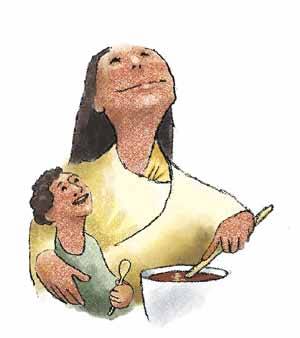Faith and Hope
“Faith is the realization of what is hoped for” (Heb 11:1)
Faith and hope are two of the theological virtues. They are called theological because they have their origin and goal in God. While theologians make precise distinctions between them, in the Bible they tend to blend together, because they take shape in specific human persons like Abraham. Both faith and hope point us toward the fullness of life in God’s kingdom.
Today’s reading from Hebrews contains the only explicit definition of faith in the Bible: “Faith is the realization of what is hoped for and evidence of things not seen.” Note that faith is defined in terms of hope. Hebrews is more of a written sermon than a letter, and its author was a skilled preacher. To illustrate his definition of faith, he offers many examples from the Old Testament and introduces the exploits of his heroes with the phrase “by faith.”
By faith Abraham left his homeland, accepted God’s promise that his descendants would form a great nation and was willing to sacrifice his son Isaac. At the same time, Abraham always desired a better, heavenly home and hoped for a place in God’s eternal kingdom. From the examples in Hebrews 11, the following characteristics of faith emerge: knowledge of unseen realities, generous response to God’s call, faithful endurance in the face of suffering and death and hopeful trust in God’s promises. Faith and hope blend together against the horizon of God’s kingdom.
The short selection from Wisdom 18 is part of an elaborate reflection on ancient Israel’s exodus from Egypt. What gave hope to the ancient Israelites was their faith in God’s promises. And their faith and hope were vindicated in their salvation.
Today’s reading from Luke 12 is one of three eschatological discourses in the Gospel. It reminds us that God wants to give us the kingdom of God (the horizon and goal of hope) and offers advice on faithful conduct in the present. The passage is a collection of short parables, in which the chief characters are a master and his servants. In the Lukan context the master is the risen Jesus, who will come again as the glorious Son of Man, and the servants are his followers.
According to these master-servant parables, the future coming of the Son of Man is certain, but its precise time is not known. Therefore the proper attitude for the servants is constant watchfulness. They should not use the master’s apparent delay as an excuse for improper behavior. The hope of the faithful servants is that they will enjoy the fullness of God’s kingdom.
Wednesday (Aug. 15) is the solemnity of the Assumption of the Blessed Virgin Mary. According to this church doctrine, Mary was taken up to be with her son, Jesus, at the moment of her death. Her faith and hope were rewarded immediately. The Scripture readings emphasize her place in salvation history as the mother of the Messiah, her assumption as the preview of our resurrection and her good example of faith and hope in God’s promises.
This article also appeared in print, under the headline “Faith and Hope,” in the July 30, 2007, issue.








